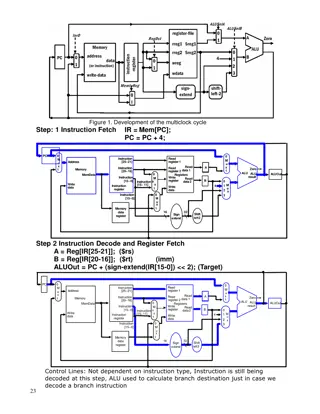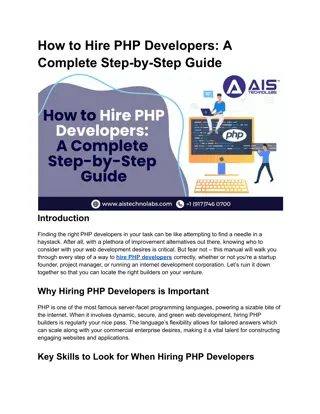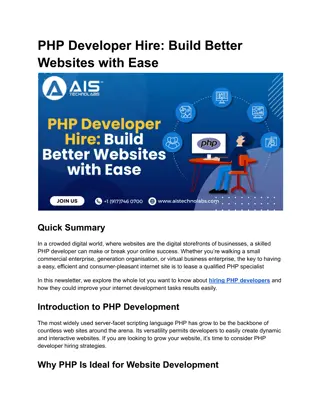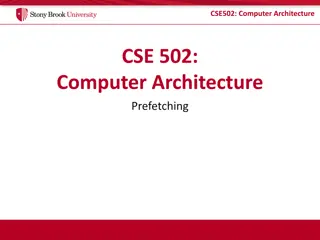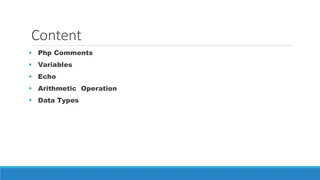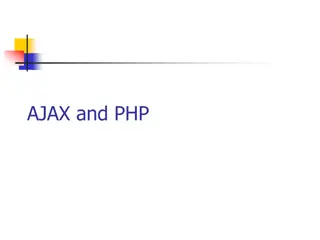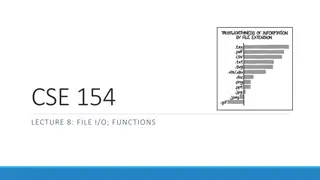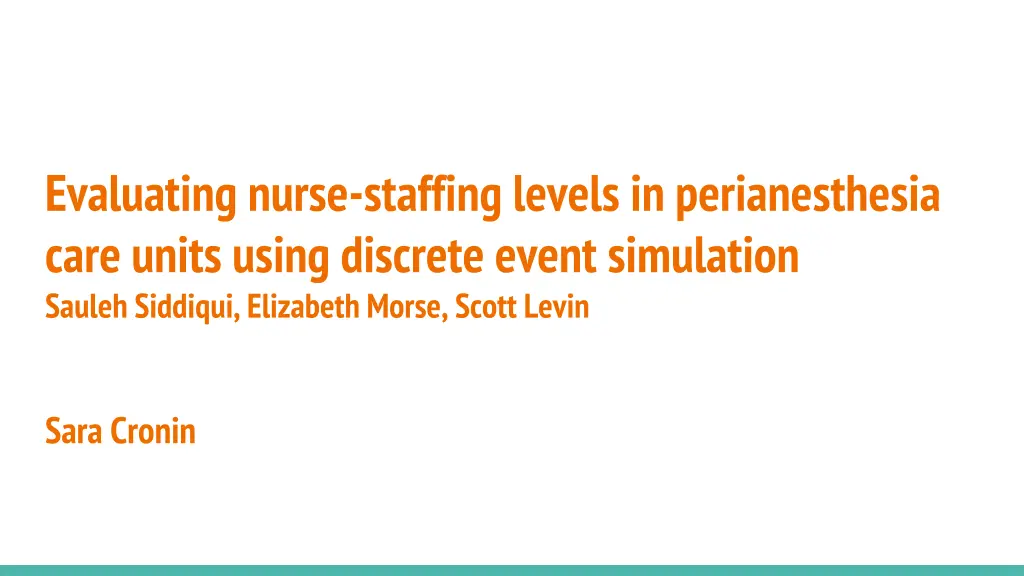
Nurse Staffing Levels Evaluation in Perianesthesia Units
Explore the use of discrete event simulation to evaluate nurse staffing levels in perianesthesia care units, aiming to optimize efficiency while minimizing costs. The study focuses on modeling patient flow to estimate staffing requirements accurately, addressing uncertainties and complexities in historical staffing methods.
Download Presentation

Please find below an Image/Link to download the presentation.
The content on the website is provided AS IS for your information and personal use only. It may not be sold, licensed, or shared on other websites without obtaining consent from the author. If you encounter any issues during the download, it is possible that the publisher has removed the file from their server.
You are allowed to download the files provided on this website for personal or commercial use, subject to the condition that they are used lawfully. All files are the property of their respective owners.
The content on the website is provided AS IS for your information and personal use only. It may not be sold, licensed, or shared on other websites without obtaining consent from the author.
E N D
Presentation Transcript
Evaluating nurse-staffing levels in perianesthesia care units using discrete event simulation Sauleh Siddiqui, Elizabeth Morse, Scott Levin Sara Cronin
Our Project Patient flow simulation and staff scheduling for medical-surgical unit Working to develop the patient census simulation Will use this to create a program the creates schedules that ensure adequate staffing while minimizing costs
Paper Selection The paper was co-authored by our mentor Dr. Siddiqui Gives background of the value of modeling patient flow Explains methods that will be a good reference/starting point for the creation of our simulation Discusses some of the possible uses of a patient flow simulation
Paper Summary The objective of this study was to create a discrete event simulation to model patient flow through a perioperative unit to create a new and more accurate way of estimating nurse staffing requirements.
Background There is a lot of uncertainty involved the movement of a patients through a perianesthesia unit Sources of uncertainty include fluctuation patient conditions post-surgery that are difficult to predict and variation in the number of surgeries performed day to day Typically staffing methods use historical data to predict the expected number of patients combined with nurse-to-patient ratios to determine a staffing level They also rely on the judgement and experience of a nurse manager who ultimately creates the schedule
Background In the past, analysis methods have not taken into account some of the complexities of nurse and patient matching These include the limit on the number of patient handoffs and the necessity for a time-varying model to accurately model patient flow This study looked to address these shortcomings and create an improved method for estimating staff requirements
Study Data Data Used: 4 months of patient data with 3926 PREP/PACU patient encounters 4 PREP/PACU units of 1059 bed urban medical center Analyses focused on one unit serving 15 ORs Simulation Inputs: Surgery durations, preparation and recovery times, patient demographics: age, gender, inpatient or outpatient status
Simulation Design Simulated patients were created based on the historical distributions They were moved through the different areas according to predetermined durations
Nursing Assignment The simulated patients are queued and each hour a set of patients is introduced to the simulation When a patient enters the unit they are assigned to a nurse based on a series of rules Patients are broken into phases based on the length of time spent on the unit These phase assignments combined with the acuity measure determine which nurse the incoming patient is assigned to If there is no existing nurse available a new nurse is added to the simulation
Simulation Output The number of patients in the PREP/PACU was determined over one year of simulated time with 11,237 patient encounters The corresponding nurse staffing estimates for the PREP/PACU area were determined
Study Results Both a patient census and nurse staffing estimate were generated for the one year time period These were shown to be consistent across simulation iterations and in line with the historical data available
Simulation Analysis The simulation staffing output (taken to be the true staffing requirement) was compared to the more common method of multiplying the number of patients by the corresponding nurse-to- patient ratio This showed an staff underestimation of over 20% towards the end of the day
Simulation Analysis The simulation was also used to test the effect of changes to the unit The average length of stay was varied to determine the impact on the number of beds and number of nurses required
Discussion and Further Work The output of a patient flow simulation could help better inform both shorter term staffing decisions as well as more long term ones concerning hiring A simulation of this type could be used to test additional interventions to patient flow and staffing on the unit It discusses the possibility of converting the staffing level output into a schedule that provide an adequate number of nurses while minimizing cost Proposes further investigation into which percentile of staffing level generated by the simulation should be used for scheduling
Assessment Pros The study demonstrates a clear improvement in accurately predicting the number of nurses necessary to handle the patient population on the unit The usefulness of a simulation in testing out proposed changes is discussed and shown Cons The simulated patient parameters are chosen from the distributions independently, so preparation, OR, and recovery times are not linked Uses a random acuity assignment rather than basing it on patient attributes Uses limited patient data so analyses involving a change in patient composition are not as feasible
Relevance for Our Project The first stage of our project will involve creating a patient flow simulation The unit we are simulating is more general and has influx and efflux of patients to and from a wider range of areas so having a groundwork to build upon will be helpful We will look to the validation techniques used in the study to verify that our simulation accurately models attributes of the unit The issue raised of the ideal staffing level is something that we are going to investigate when creating the optimization problem
Citation Sauleh Siddiqui , Elizabeth Morse & Scott Levin (2017): Evaluating nurse staffing levels in perianesthesia care units using discrete event simulation, IISE Transactions on Healthcare Systems Engineering, DOI: 10.1080/24725579.2017.1346729







